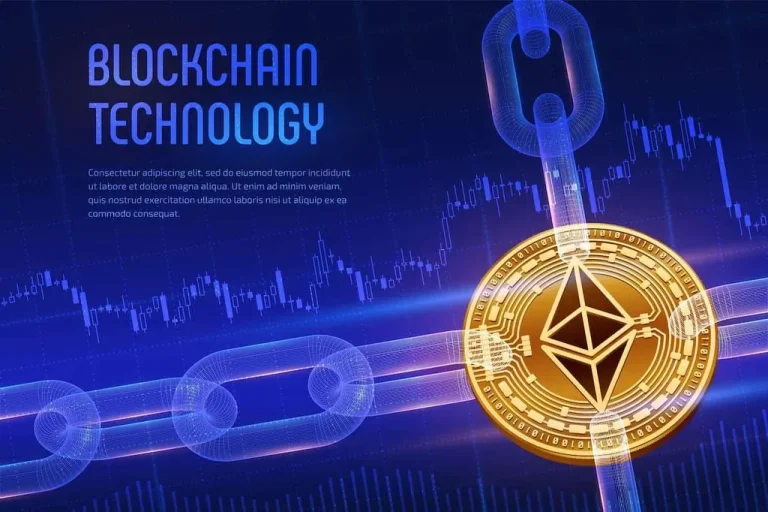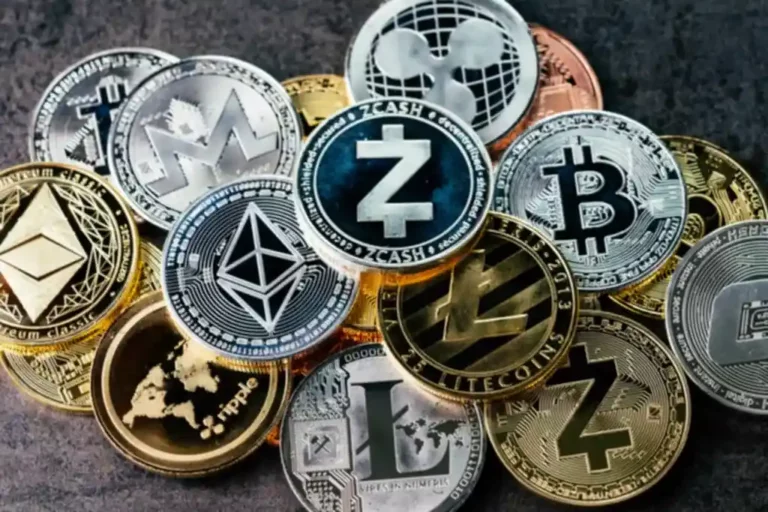Content
Several crypto protocols, such as Chainlink, collaborate with global financial companies to integrate tangible and intangible real-world assets into the blockchain. The protocol specializes in overcollateralized lending, which is secured by https://www.xcritical.com/ digital assets. This includes thorough borrower due diligence and on-chain transparency, offering superior risk-adjusted yields and enhancing capital efficiency for digital asset portfolios. Many of the other challenges and risks of tokenized RWAs are the same or similar to those in the broader digital asset space, requiring the same mitigations. Reliable and secure custody solutions are a must-have to ensure safe asset storage.
The Financialization Of Real Assets
This industry report provides a comprehensive overview of the growing tokenization market, with contributions from BCG, 21Shares, Paxos, Backed, and Chainlink. Publishing its 2025 ‘Look Ahead’ thesis, Fidelity Digital Assets argues it’s not too late for sidelined investors to take positions in crypto markets, speculating that the ongoing bullrun still has plenty of legs. Fidelity Digital Assets, an investment arm of the TradFi giant boasting $5.8T in discretionary assets, has highlighted RWAs and real world assets crypto tokenization as an area to watch in 2025. Companies can also engage external experts to capitalize on their expertise and help reduce the technological barriers to entry.
Challenges in Tokenizing Real-World Assets
Momentum for RWAs has grown in 2023 and the market value of many of these assets are trending towards new all-time highs. The evolving macro environment will continue to influence Proof of identity (blockchain consensus) the evolution of this sector, as will continued demand for these types of assets from native and non-native crypto users alike. Tokenization is a tale of two trends, happening across two dimensions of real world assets (RWAs), namely the digitalization and financialization of RWA. (i) Digitalization is the transformation of physical assets into digital formats followed by further improvement in the way these assets are represented and used in a digital database. (ii) Financialization is the trend of turning real assets into financial instruments through the reengineering of cash flows and investment opportunities.
Why are financial assets seeing so much traction?
This success is a testament to how RWAs can effectively generate sustainable income streams within DeFi protocols. Tokenized real-world assets have been a growing segment of the DeFi ecosystem, with RWA total value locked sitting at ~$5B in December 2023, according to DefiLlama. Inventory management is a critical component for achieving supply chain visibility, transparency and resilience. Inventory management includes ensuring accuracy among inventory values and making sure the inventory is available in the right place, at the right time, in the correct quantity, and for the right customer. Enabled by data and technology, our services and solutions provide trust through assurance and help clients transform, grow and operate. Hydration streamlines DeFi by unifying liquidity across chains, eliminating bottlenecks, and leveraging Polkadot’s multichain infrastructure.

RWAs: The Assets People Want in a Superior Format
Commodities like gold and silver offer a new level of liquidity and flexibility when tokenized. Likewise, bonds and equities can be tokenized, as with artworks and intellectual properties. Let’s dive into the fascinating world of RWAs, exploring what they are and how they are tokenized. We’ll see how major exchanges like Binance, Bybit, and Kraken integrate these assets into decentralized finance (DeFi).
If this inclusivity is brought into broader financial services, new opportunities will continue to arise, even leveling up to higher-value assets. Along with the help of blockchain technology, transparency and security in RWA transactions will increase the appeal and trustworthiness of these investments. RWAs include valuable items that make up a large part of the global financial system and are expected to bring economic benefits. To give you some examples, assets such as properties, gold, and government bonds are converted into digital tokens. By breaking huge-size investments into smaller pieces, traders can get their hands on such assets at a more affordable price.

These RWAs act as off-chain security, which allows individuals to then fuel these loans using USDC via risk-adjusted liquidity pools on Goldfinch. Essentially, borrowers gain access to financing without locking up crypto, while lenders earn returns on loans backed by RWAs. This unique approach blurs the line between DeFi and traditional uncollateralized financial loans seen in the TradFi space. As of December 2023, the total value locked (TVL) in tokenized RWAs within the DeFi ecosystem was around $5 billion, with many DeFi projects now incorporating RWAs into their protocols.

Existing systems relied heavily on paper contracts, manual accounting, and slow settlement processes, creating significant inefficiencies in asset management. Governed and operated by the Centrifuge DAO through CFG tokenholders, the open-source protocol has financed over $661 million in assets as of December 2024, establishing itself as the leading platform for tokenizing and managing real-world assets. Jason Barraza is the COO at Security Token Market, overseeing STM operations and future initiatives aimed at enhancing data transparency and media coverage within the tokenized securities space. During his time on Wall Street, Jason served at Bank of America’s wealth management division, exposing him to the challenges of the current archaic system. Prior to that, Jason’s professional journey was characterized by a diverse background in consulting and entrepreneurship. Notably, he evaluated over 100 businesses across multiple industries, identifying potential avenues for change and improvement.
Stablecoins formally entered the market in 2014 with the introduction of Tether (USD₮). Tether was initially deployed on the Bitcoin blockchain and was created to address the inability of centralized crypto exchanges (CEXs) to obtain formal banking partners. In supporting Tether, CEXs were able to increase market liquidity by providing increased access to fiat on/off-ramps while also meeting market demand for USD-denominated trading pairs. Tether also enabled investors to reduce their exposure to crypto’s volatility without needing to return to the traditional financial system. Furthermore, regardless of which chain a tokenized asset is minted on, banks and asset managers can use CCIP to interact with tokenized RWAs from across the onchain economy via their existing backend infrastructure or from a single Web3 wallet. Keeping assets updated with all relevant information as they move across the financial system will be transformative to maintaining golden records—single data points that provide all of the important information about an asset with total accuracy.
- By making traditional investments more accessible and transparent, platforms like stUSDT, Ondo Finance, and Backed Finance are contributing to the evolution of the financial ecosystem.
- It is ultimately the choice of the consumer regarding what type of assets they want to hold and what applications they wish to deploy their assets into.
- With over $50 billion in RWAs already on-chain, 2025 is predicted to reach at least $500 billion (excluding stablecoins).
- RWA digitization is only starting to be explored; with its complex development efforts and high startup fees, companies should begin to research and form a development group to learn how digitized RWAs can benefit their organization.
- Integrating real-world assets into the crypto world, such as DeFi, reshapes the crypto landscape by making tangible assets more “liquid” and accessible.
Smart contracts and blockchain networks should be robust enough to withstand attacks, and measures such as code audits and bug bounties help to reduce issues with vulnerabilities or software faults. The long-term benefits for the global markets will depend on the extent of adoption and network effects. Goldfinch benefits borrowers, lenders, and the DeFi ecosystem by democratizing access to financial loans, offering diversification, and potentially fostering wider adoption. This can be especially helpful for Goldfinch’s target audience, which consists of businesses in emerging markets that require access to liquidity. Unlike most DeFi protocols requiring crypto collateral, Goldfinch flips the script on DeFi lending and specializes in uncollateralized loans. This is accomplished by partnering with real-world originators that evaluate borrowers and their RWA holdings.
Our framework aims to demystify tokenization and its impact on digitalization and financialization of RWAs. Our goal is to equip founders and investors with a deeper understanding of the full potential of RWA tokenization. The power of public blockchains is that they can support and serve both tokenized RWAs and crypto-native assets at the same time.
Integrating real-world assets into the crypto world, such as DeFi, reshapes the crypto landscape by making tangible assets more “liquid” and accessible. Exploring what is RWA in crypto reveals how these assets open new investment opportunities for a broader audience. For safeguarding RWAs in crypto projects further, reliable custody solutions like Ledger and Trezor are also necessary to protect the physical assets backing the tokens. Maintaining the security of token contracts is crucial to prevent unauthorized transfers and asset loss.
This is because blockchain and smart contracts make transactions smoother by cutting out intermediaries and lowering costs. This turns tokenized assets into a 24/7 global market, breaking down the barriers for global investors who now can trade anytime, anywhere. Roughly 82% of the new value created in the RWA sector this year has come from yield-bearing RWAs like tokenized private credit, real estate, and Treasuries. This speed and efficiency helps smaller investors with fewer funds be able to participate in investments that otherwise would be out of reach for them. As blockchain technology continues to evolve and mature, it is expected to play an increasingly crucial role in the tokenization of real-world assets, unlocking new opportunities for investors and transforming traditional financial markets. Can cryptocurrencies and their disruptive technological foundations bring change to traditional financial systems?
Finally, it isn’t enough just to issue an asset, there must also be good market liquidity or demand for it in order for it to thrive. The team, including co-founder Lucas Vogelsang, has actively contributed to the broader Polkadot ecosystem through initiatives like Velocity Labs, helping drive DeFi infrastructure development forward. Their successful navigation of governance processes and deep ecosystem engagement have set new standards for how projects can integrate with and strengthen the community. Tokenization has caught institutional attention due to cost savings and operational efficiencies. This is observed in both trials and in-production use cases compared to their off-chain counterparts.

